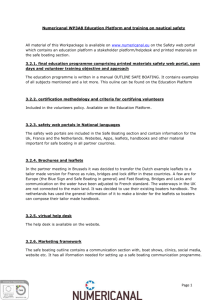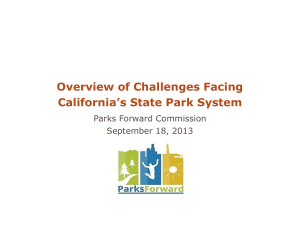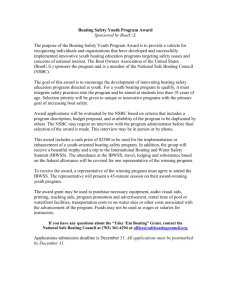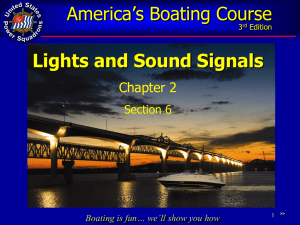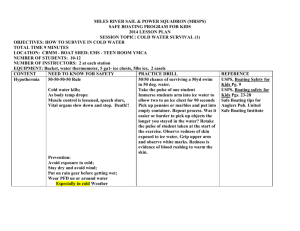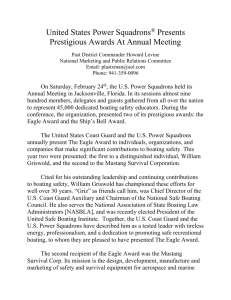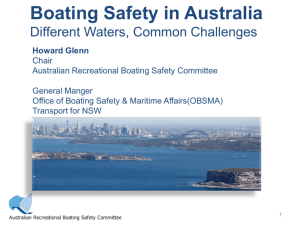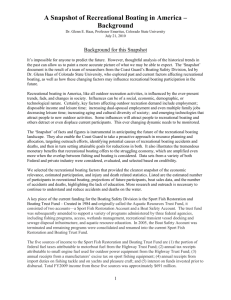boating registration fees – where do they go
advertisement
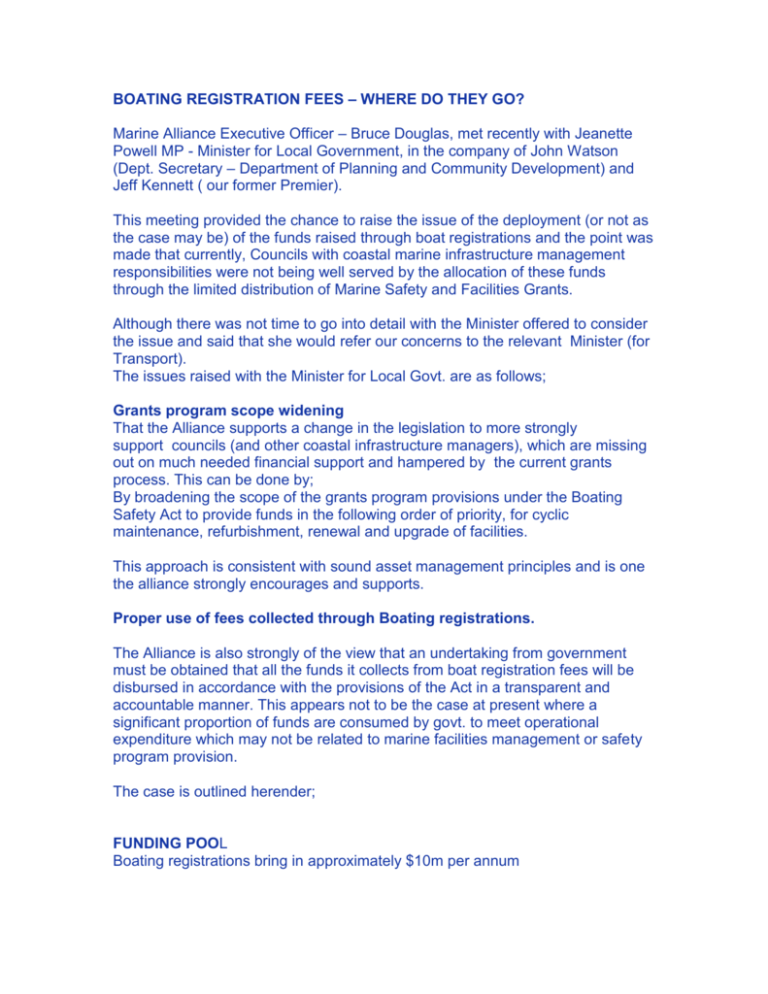
BOATING REGISTRATION FEES – WHERE DO THEY GO? Marine Alliance Executive Officer – Bruce Douglas, met recently with Jeanette Powell MP - Minister for Local Government, in the company of John Watson (Dept. Secretary – Department of Planning and Community Development) and Jeff Kennett ( our former Premier). This meeting provided the chance to raise the issue of the deployment (or not as the case may be) of the funds raised through boat registrations and the point was made that currently, Councils with coastal marine infrastructure management responsibilities were not being well served by the allocation of these funds through the limited distribution of Marine Safety and Facilities Grants. Although there was not time to go into detail with the Minister offered to consider the issue and said that she would refer our concerns to the relevant Minister (for Transport). The issues raised with the Minister for Local Govt. are as follows; Grants program scope widening That the Alliance supports a change in the legislation to more strongly support councils (and other coastal infrastructure managers), which are missing out on much needed financial support and hampered by the current grants process. This can be done by; By broadening the scope of the grants program provisions under the Boating Safety Act to provide funds in the following order of priority, for cyclic maintenance, refurbishment, renewal and upgrade of facilities. This approach is consistent with sound asset management principles and is one the alliance strongly encourages and supports. Proper use of fees collected through Boating registrations. The Alliance is also strongly of the view that an undertaking from government must be obtained that all the funds it collects from boat registration fees will be disbursed in accordance with the provisions of the Act in a transparent and accountable manner. This appears not to be the case at present where a significant proportion of funds are consumed by govt. to meet operational expenditure which may not be related to marine facilities management or safety program provision. The case is outlined herender; FUNDING POOL Boating registrations bring in approximately $10m per annum Grants through the Boating safety and Facilities Grants program return $2m per annum. This highlights an $8m per annum anomaly because the Order in Council establishing the registration fee collection and disbursement powers of Government, explicitly states that these funds must be returned for boating facilities and safety program implementation. There would appear to be a lack of accountability and indeed compliance with the provisions of the Act as to where the balance of funds collected are spent, there needs to be evidence that these funds are being used for their intended (statutory) purpose. COUNCILS (AND PARKS VIC) INFRASTRUCTURE MANAGEMENT DILEMMA All public boat launching facilities currently exhibit significant deficiencies and or defects and (most?) do not meet current Australian Standards. These deficiencies reflect a diminished level of safety and amenity for users and significantly increase the risk of damage to vessels or injury to patrons. The current facilities also do not have adequate capacity to meet current user demands and the poor levels of amenity and safety combined with substantial congestion at peak times, causes many potential boating users from committing to an active involvement and the purchase of a craft. The current grants funding rules do not provide funds for management authorities (councils) to apply for funding for refurbishment or cyclic maintenance activities and funds may only be applied for upgrade works. Authorities are restrained in even making application for funding for upgrade works because of the substantial effort required to address the planning and environmental approval and design requirements and to the have a "construction ready" project that can be delivered in the relatively short time allowed for the expenditure of the funds if they are granted. The timing of the application and grants allocations does not marry well into the financial and budget planning for the authorities who are reluctant to commit matching funding if they are not certain of a successful grant application. PUBLIC FACILITIES CONDITION ASSESSMENT - CLOSING THE INFRASTRUCTURE GAP Advice provided to the Government in 2009 indicated that the capital requirement to address Australian Standards compliance and capacity upgrades to meet current demands is in the order of $100m The application of the $8m difference between funds collected and funds disbursed by the State Government would without any increase in boating user registration fees, see the infrastructure gap closed comfortably within 12 to15 years. Furthermore, the ongoing application of these funds and the consequent growth in the market due to increasing participation, would enable a planned program of upgrades to continue to meet the known suppressed and projected demands for this infrastructure. A direct benefit of the use of the funds as outlined would be an increase in participation in boating, and significant growth in sales, consumables, servicing and associated equipment purchases. Our market sector is estimated to be worth $1bn to the State economy and provides 14000 jobs. Based on the current size of this market, an increase in participation of 5% may be conservatively estimated to generate an additional 300 jobs. Spending the funds in the manner requested clearly offers good value to the community. ACTION REQUIRED The Alliance has written to the Minister seeking her support for the following measures to be taken to meet the needs of both the facility providers and boating users; 1 Review the use of boating registration revenue funding to ensure that it is directed in total in a transparent and accountable manner, to boating facility and safety program implementation in accordance with S312 of Boating Safety Act. 2 To broaden the scope of the use of grants funding to enable effective and ongoing support for provision of funds in the following order of priority, for cyclic maintenance, refurbishment, renewal and upgrade of facilities.
